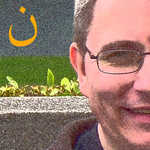After having recently declared my disdain for Hi sketches about coffee and coffee shops, I looked rather deeper into, dare I say, my heart and discovered that I was actually very interested in the fact that around 50 Hi writers have held forth on the topic(s) for a total of over ten thousand words.
A quick tour of the internet shows that the early history of the coffee shop stretches back hundreds of years very likely originating in 1475 in Istanbul. (Apparently the name of the first shop is known: Kiva Han). From a number of points of view, this first 500 years of the phenomenon constitutes an important social history, not least in the history of science (my own field). I’d like to develop this point further in another sketch, but here I want to acknowledge that the coffee shop is actually a special historical case of a much wider issue: often referred to as “the third place”.
In 1989 a sociologist named Ray Oldenburg expounded the notion of the third place in a way that resonated with people in many professional areas, including urban planning, business, philosophy, and a broad range of academic disciplines. The title of his book tells the story very succinctly: The Great Good Place: Cafes, Coffee Shops, Community Centers, Beauty Parlors, General Stores, Bars, Hangouts, and How They Get You Through the Day. The argument was gradually widened to include parks and gardens, museums, libraries, and even churches.
Here’s Wikipedia’s take on the matter: Oldenburg calls one’s “first place” the home and those that one lives with. The “second place” is the workplace — where people may actually spend most of their time. Third places, then, are “anchors” of community life and facilitate and foster broader, more creative interaction. All societies already have informal meeting places; what is new in modern times is the intentionality of seeking them out as vital to current societal needs. Oldenburg suggests the following hallmarks of a true “third place”:
*Free or inexpensive *Food and drink, while not essential, are important *Highly accessible: proximate for many (walking distance) * Involve regulars – those who habitually congregate there *Welcoming and comfortable *Both new friends and old should be found there.
I’m going to stop here for now, but if you would like to pursue this notion of third space/place further, try this lighthearted, yet very informative, presentation on the Monocle 24 program The Urbanist, Episode 125.
Other moments in Aireys Inlet
-
Burning, poem, Books
Burning the Books
in Aireys Inlet, Australia -
Today's Sunrise, poem
Beginning or End?
in Aireys Inlet, Australia -
Verses for Emlyn, Grandfathers, family fun
Grandad Wade
in Aireys Inlet, Australia -
Verses for Emlyn, Roses, flowers
Beauty
in Aireys Inlet, Australia -
The Small Things, Depression
Small blessings #4: Just a touch of rose.
in Aireys Inlet, Australia -
Verses for Emlyn, birds, bird bath
Seven
in Aireys Inlet, Australia -
Atheism, Today's Sunrise
Glory
in Aireys Inlet, Australia -
Today's Sunrise, Today's Coffee, health
Morning Cuppa
in Aireys Inlet, Australia -
Verses for Emlyn, kangaroo, wildlife
Alert
in Aireys Inlet, Australia












